Concussion treatment has changed dramatically in the past few decades. Previously, most primary care doctors treated concussions by prescribing medications and total rest in a dark room (called cocooning). Now, more medical professionals recognize that concussions respond best to therapy, especially to decrease the chance of developing long-term effects.
Of the many different treatments available to concussion patients today, some are universally helpful, but others are more situational. For example, if you’re experiencing dizziness and balance problems, then vestibular therapy and/or vision therapy might be the best solution for you. The following are the concussion treatments we’ll cover in this post:
- Multidisciplinary therapy
- Physical therapy
- Neuro-optometric vision rehabilitation
- Vestibular rehabilitation
- Neck rehabilitation
- Cognitive rehabilitation
- Speech and language therapy
- Occupational therapy
- Cognitive behavioral therapy
The only problem with most of these therapies is that being treated with only one is often not enough for a patient who may be suffering from multiple issues, such as cognitive impairments, vestibular issues, vision problems, neck problems, and more. Visiting multiple providers to address all concussion-related issues is expensive, time-consuming, and less effective than receiving multiple therapies in one visit.
That’s where visiting a healthcare professional who can offer more than one therapy in a session comes in. The best treatment for concussion is one that offers a multidisciplinary approach delivered by a team of expert healthcare providers working together.
Teamwork is one of the most fundamental factors in concussion rehabilitation, allowing for better patient care and improved outcomes.
This is a tried and tested method; multiple studies show that an interdisciplinary model combining conventional rehabilitation therapies and medical support improves patients’ quality of life in the long term. For this reason, we offer multidisciplinary therapy and cardio exercise to treat concussion patients at our clinic, Neural Effects (more on this later).
That said, some mild traumatic brain injury (TBI) patients need and benefit from deep expertise in certain areas. For example, patients with lingering post-concussion anxiety and depression may also need cognitive behavioral therapy. Those with vision dysfunction may need extra time spent just on vision therapy.
In addition, if there aren’t any concussion clinics offering multidisciplinary treatments in your area, attending different therapies is better than getting no treatment. (Find concussion treatment near you.) Attending therapy can help you heal from your concussion faster.
Finally, these treatments are most effective when you follow best practices for recovery at home — like a gradual return to activities, rest, cardio exercise, pacing yourself, good nutrition, and so forth. We’ll cover those at the end of the article. With that in mind, here’s a list of the best treatments for concussion patients.
If you live in Provo, Salt Lake City, or anywhere else in the Utah County area, we can help you actively recover from your concussion. We are in network for most types of medical insurance. Schedule your evaluation today.
1. Multidisciplinary Therapy
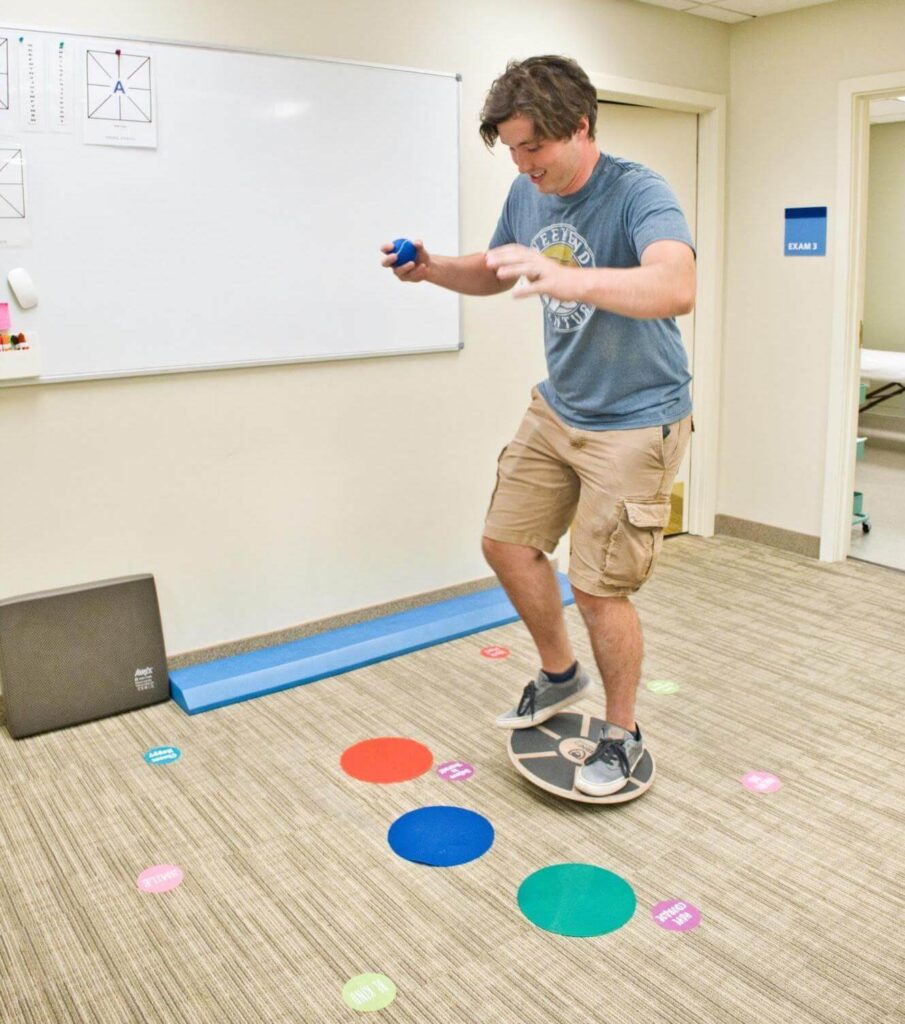
Instead of patients seeking multiple therapists to address different symptoms, there is increasing evidence that a multidisciplinary approach to support rehabilitation after a concussion is better for the patient. As concussions trigger different symptoms in each patient, an approach involving more than one type of healthcare provider is the best way to ensure the patient receives the concussion care they need to address their specific symptoms.
Multidisciplinary rehabilitation plans started with occupational and physical therapists, but now providers are also incorporating vestibular rehabilitation therapy (to address symptoms like dizziness and vertigo) and vision therapy (for symptoms like blurred vision or depth perception issues). More comprehensive concussion management programs also include neck rehabilitation, headache management, cognitive therapy, and patient education. Some programs are specific to address sports injuries (common in contact sports) and may include athletic trainers and sports medicine specialists.
These rehabilitation programs provide many benefits for the patients, including:
- Easier access to healthcare
- Faster recovery
- Reduced incidence of long-term medical complications
- Improved quality of life
- Reduced concussion symptoms
- Improved patient comfort
- Maximized brain recovery
- Minimized time away from work, school or sport
Multidisciplinary Treatment at Neural Effects
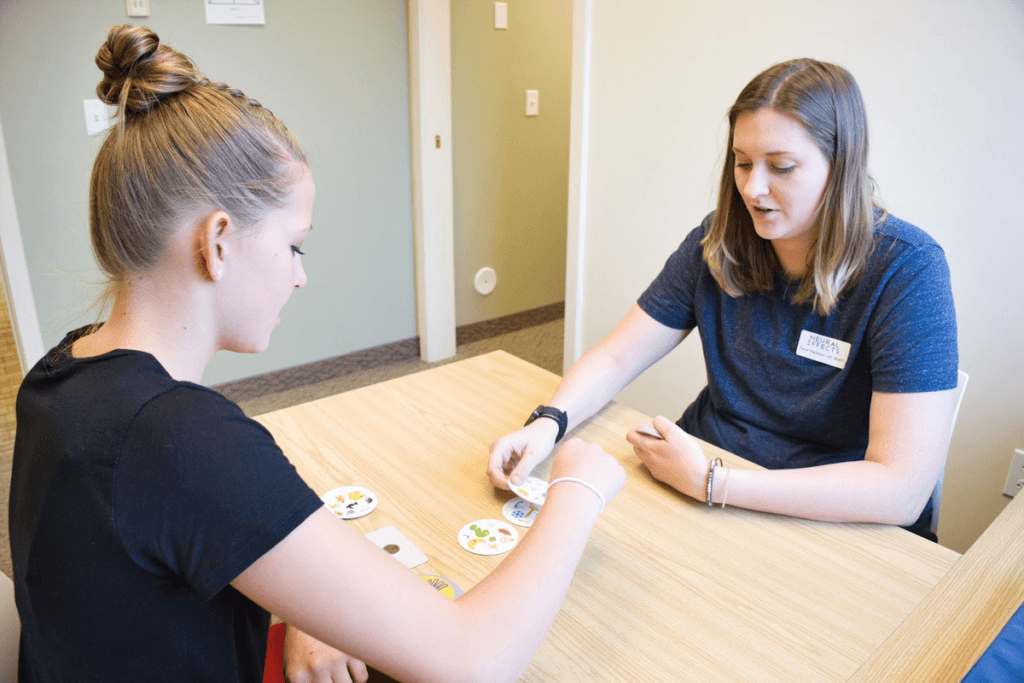
At Neural Effects, we use a combination of exercise intervals and multiple therapies to treat our concussion patients.
Before treatment starts, our patients undergo a detailed evaluation. Our team will review your medical history and ask about the symptoms you’re experiencing. They’ll also decide whether CT or MRI scans are necessary to check for bleeding in the brain or a skull fracture. If you already had these scans at the hospital, bring them to your appointment, and we can assess them.
At this meeting, our team will also conduct a series of physical exams, including:
- A cranial nerve exam to determine if any cranial nerves were affected by the concussion
- A cervical spine exam to check for fractured or a herniated discs
- A balance assessment to identify balance and posture issues
- A vision assessment to assess your vision, including peripheral vision, depth perception, ability to focus, and other parameters
- A muscle strength assessment to check if both sides of the body have the same strength (because large differences between the left and right side could indicate a serious injury)
After these exams, patients can start treatment (usually within 24 hours). We use a variety of different therapies, including neuromuscular therapy, vestibular therapy, vision therapy, cognitive therapy, and physical therapy.
Sessions start with short sessions of physical exercise, usually done on a treadmill or a stationary bike. The aim is to raise your heart rate to promote healthy blood flow in the brain without aggravating symptoms. Our therapists are trained to guide you through intervals of exercise and measured breathing to avoid symptoms of exercise intolerance. This exercise step is key because it prompts a mechanism in the brain called the post-exercise cognitive boost (PECB). When you exercise, your brain releases neurochemicals like BDNF that can improve the brain’s ability to benefit from therapy.
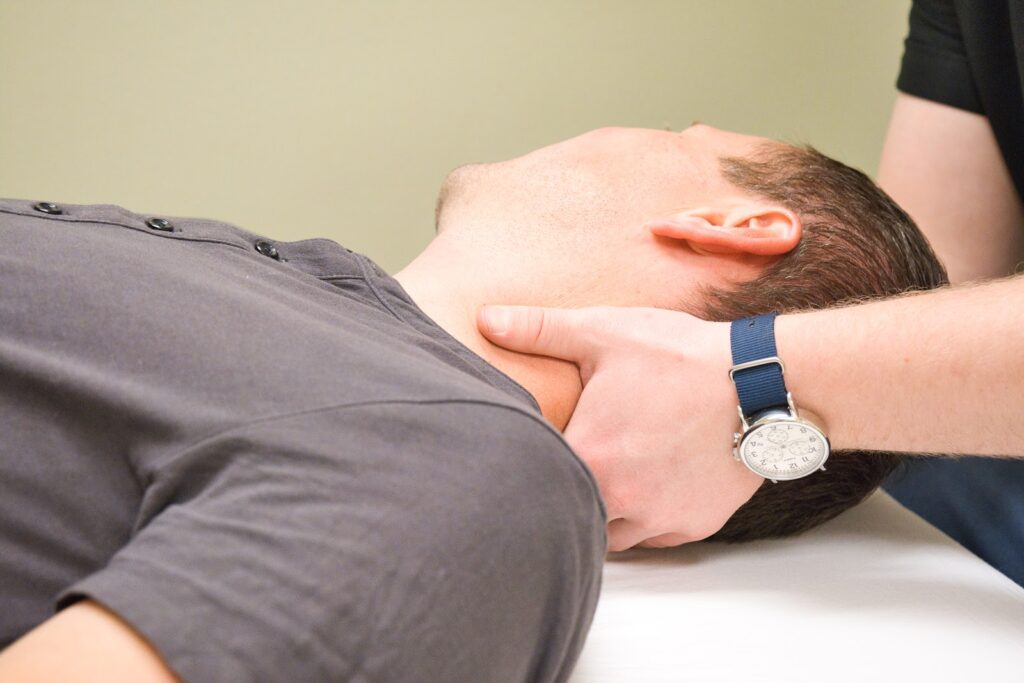
We address symptoms of a concussion such as double vision, light sensitivity, dizziness, and vertigo with vestibular and vision therapy. Patients also undergo cognitive therapy, completing memory exercises and logic puzzles to address cognitive symptoms like memory issues, brain fog, and difficulty concentrating. Neuromuscular therapy involves massaging your neck and upper back to relieve tension, reduce headaches, and improve blood flow to the brain. Patients perform various physical therapy and occupational therapy exercises that encourage healthy neuroplasticity.
After each session, patients meet with one of our therapists to review progress and receive a list of exercises to do at home. Typically, homework includes physical exercises, cognitive activities, and breathing and relaxation techniques. Completing these exercises at home gives patients a better chance of a full recovery.
If you live in Provo, Salt Lake City, or anywhere else in the Utah County area, we can help you actively recover from your concussion. We are in network for most types of medical insurance. Schedule your evaluation today.
2. Physical Therapy
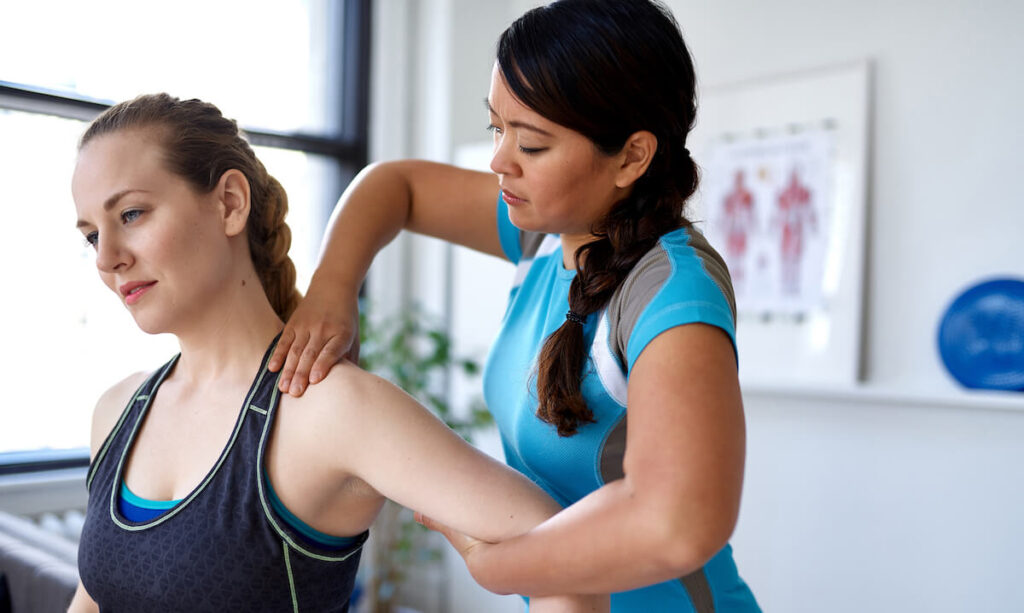
Physical therapists are trained to treat any concussion symptoms that affect the body, such as balance issues, dizziness, vertigo, and neck pain. These therapists can design treatment programs to address these issues using different exercises, manual therapy, and even subtle techniques like posture correction. The aim is to use physical activity to help patients manage their symptoms and support a safe and gradual return to their normal activities without overloading the brain and triggering symptoms.
The American Physical Therapist Association (APTA) developed a set of evidence-based practice guidelines describing what physical therapists can assess and treat in concussion patients, including:
- Neck and back: Even if not severe enough to warrant a diagnosis of whiplash, excessive force and movement of the head during a concussion still affects the neck. Therapists can devise a treatment plan to reduce symptoms and restore the strength, mobility, and health of those stabilizing tissues and structures.
- Dysfunction of the Autonomic Nervous System (ANS): Growing evidence indicates that a concussion affects the nervous system. Physical therapists specialized in neurology can use gentle exercises to help with concussion symptoms triggered by ANS dysfunction, such as sudden changes in blood pressure and heart, as well as headaches and dizziness.
- Vestibulo-oculomotor: The visual and vestibular systems communicate with each other to help your body understand where you’re located in space. Concussions disrupt these communication channels, leading to symptoms like dizziness, motion sickness, disorientation, and depth perception problems. If you’re experiencing these problems, look for a therapist well trained in treating vision symptoms, as the wrong exercises may make the symptoms worse. If you’re not getting better after a few sessions, consider consulting a neuro-optometrist (see below).
- Motor function impairments: It’s common for patients with a head injury to experience physical issues after a concussion, including muscle rigidity or weakness, longer reaction time, changes in walking patterns, and difficulty with coordination. Using exercises to stretch and work different parts of the body affected by concussion, therapists can release tension and reduce inflammation that may be causing pain or discomfort.
- Multitasking: Concussion patients often struggle to multitask. This is because engaging in different tasks requires the ability to divide attention, which is often affected by the concussion. Dual-task exercises — such as balancing on one foot and listing names of animals in alphabetical order — are excellent rehabilitation tools for concussion patients.
For more information, see our article on physical therapy for concussion.
Find a Specialist
If you’re looking for a physical therapist, find one with experience in treating people with concussion problems. You can find physical therapists by using Find a PT, the online tool built by the American Physical Therapy Association to help you search for physical therapists with specific areas of expertise in your area.
Some therapists are generalists, while others have a neurological, orthopedic, or vestibular rehabilitation focus. You might need different therapists to address different issues. For example, patients may see an orthopedic therapist for headaches and neck pain caused by whiplash and a vestibular specialist for dizziness and vertigo.
3. Neuro-Optometric Vision Rehabilitation
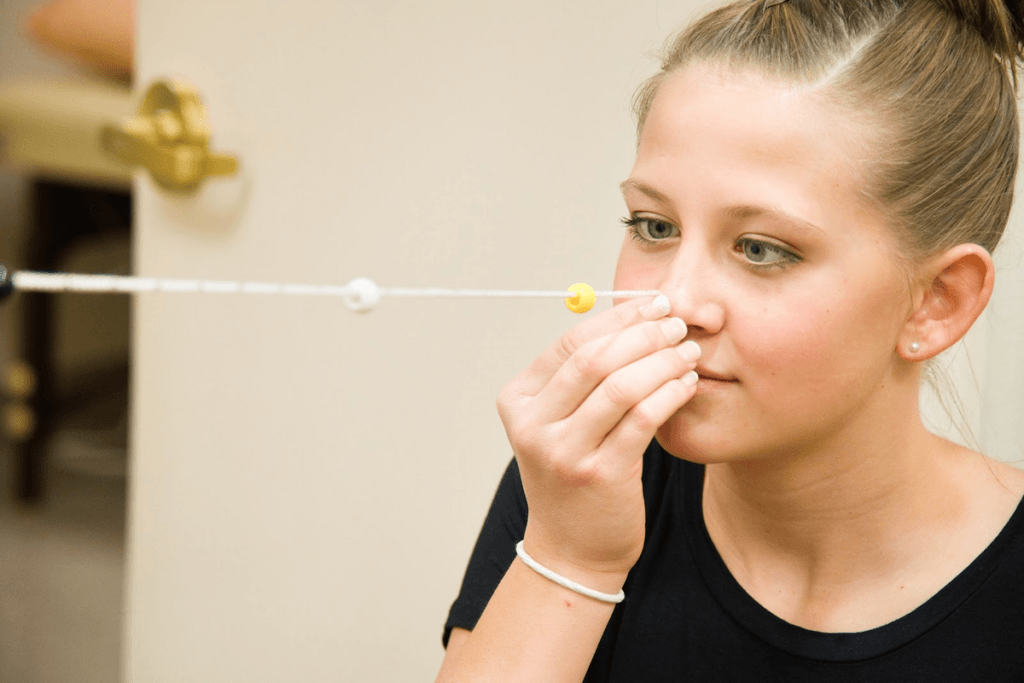
A patient at Neural Effects uses the Brock string for vision therapy.
As described earlier, if you’re experiencing severe vision problems, you may need a neuro-optometric therapist. Physical therapy can help improve some vision issues but it’s not as comprehensive as vision therapy prescribed by a neuro-optometrist. Neuro-optometric therapists conduct a more in-depth consultation than a regular eye exam, testing how the brain communicates with the eyes and how an injury has affected function.
Some types of treatment include:
- Patching: Placing a patch on one eye (or part of the visual field in one eye) helps eliminate double vision, a common concussion symptom.
- Prism lenses: Therapists prescribe prisms to eliminate binocular vision problems such as double vision. In addition, these devices can also be used to treat poor balance and posture issues. (Note: Patching and prism lenses may help alleviate symptoms temporarily, but they do not fix the underlying problem. The best neuro-optometrists only use them in a short-term setting while helping patients recover via vision therapy.)
- Specific prescription lenses: Therapists may use these lenses to help enhance the patient’s visual comfort and clarity.
- Vision therapy: Therapists use a variety of eye exercises to improve the communication between the brain, the body, and the eyes. Vision therapy programs focus on improving visual skills, such as hand-eye coordination, eye tracking, peripheral vision, focusing, eye movements and depth perception.
Find a Specialist
If you’re looking for a neuro-optometrist, search amongst members of the Neuro-Optometric Rehabilitation Association (NORA) or the College of Vision Development (COVD). It’s important to choose a therapist with experience dealing with concussion symptoms.
4. Vestibular Rehabilitation
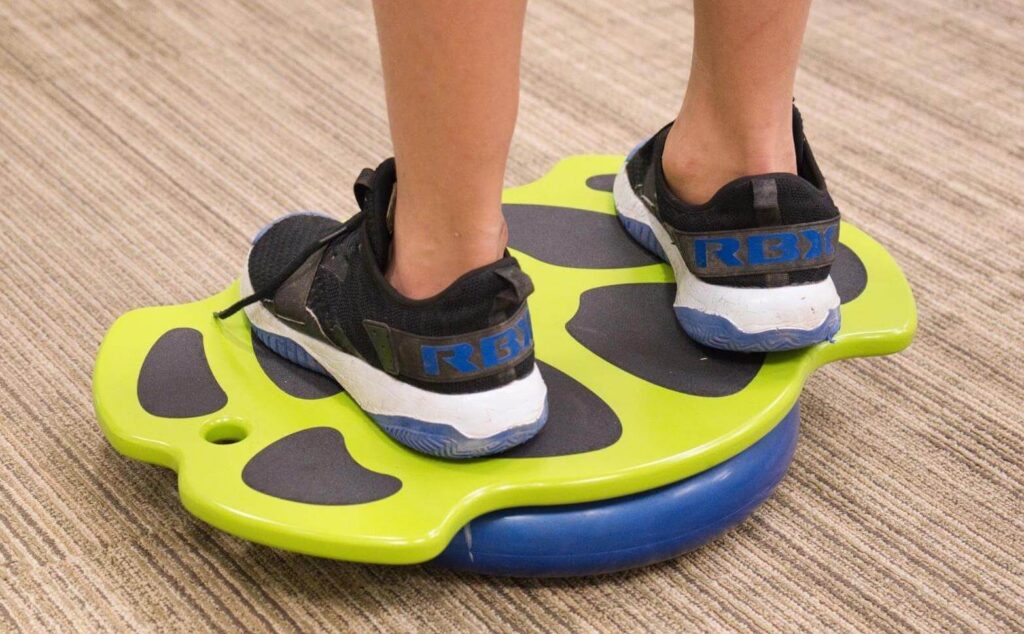
After a head trauma, patients often experience vestibular dysfunction. This leads to dizziness, vertigo, problems with posture, difficulty with depth perception, and more. Vestibular rehabilitation is a type of therapy that aims to improve these symptoms by correcting the relationship between the brain and the inner ear (where the vestibular system is located).
Vestibular rehabilitation relies on different exercises:
- Gaze stabilization: The vestibulo-ocular reflex allows you to stay focused on an object even when your head is moving. Concussions may disrupt this reflex, causing disorientation and vertigo. Therapists can use a variety of eye exercises to help the patient’s gaze and restore the vestibulo-ocular reflex after a concussion.
- Habituation exercises: Therapists use these exercises for patients who experience extreme dizziness when they move around. Habituation exercises reduce dizziness by gradually increasing exposure to the movements that trigger them, such as bending over to pick something up off the ground. The goal is to increase tolerance until those movements no longer trigger dizzy spells.
- Balance and exertional training: Therapists use these exercises to improve endurance, balance, and build up strength. These are particularly useful for athletes recovering from a sports-related concussion.
- Epley maneuver: Therapists treat concussion patients suffering from Benign paroxysmal positional vertigo (BPPV) with the Epley Maneuver. This method involves moving the head into four different positions and staying in each position for 30 seconds.
- Controlled breathing: Therapists can teach patients breathing techniques to help cope with vestibular symptoms during recovery.
- Compensatory methods: Therapists may also use compensatory methods while the patient is recovering. Patients may be trained to rely more on their eyesight to make up for a lost sense of balance, for example.
It’s important to note that although vestibular therapy is one of the most effective treatments for balance disorders after a concussion, not all cases of dizziness are caused by problems with the inner ear. Some patients may experience dizziness and balance issues caused by cervical problems, such as whiplash. In this case, vestibular therapy is not going to help. It’s important to find a provider who can distinguish between causes of symptoms like dizziness.
Learn more here about vestibular therapy for concussion patients.
Find a Specialist
If you’re looking for a specialist, you can ask your doctor to provide a referral to an otolaryngologist (ENT) or a physical therapist specialized in balance disorders and vestibular rehabilitation therapy. Alternatively, you can search through this online list of certified vestibular specialists to find the right one for you.
5. Neck Rehabilitation

A patient at Neural Effects receives a neuromuscular massage of the neck.
It’s not uncommon for patients to experience whiplash when they suffer a concussion (especially in car accidents). Whiplash occurs when the soft tissues in the neck and back become stretched and sprained after a sudden impact, leading to neck pain, tenderness in the neck muscles, reduced movement and headaches.
Every whiplash injury is different, and treatment needs to be tailored to individual needs. Some of the options used during neck rehabilitation programs include:
- Physical therapy: Physical therapists can suggest exercises to improve the neck’s strength and flexibility to relieve stress and reduce pain (see above). They may also provide massage therapy.
- Prescription pain medications: Patients may need prescription medications, such as muscle relaxants and opioids, prescribed under the careful supervision of a medical care professional. Some patients may be advised to use over-the-counter painkillers, such as ibuprofen and acetaminophen (Tylenol). In addition, neurologists may also prescribe a cervical epidural steroid injection to reduce nerve and tissue inflammation caused by a disc herniation or a trigger point injection to help an irritated muscle.
- Manual manipulation: Patients may need to see a chiropractor for manual adjustments to the spine to increase range of motion and reduce pain. It’s important to find a provider with experience dealing with concussion patients. Any manipulations done on the neck area need to be extremely gentle and precise. If you visit a provider with limited knowledge, the treatment may not reach the affected areas or may even cause further damage.
- Acupuncture: Some patients report experiencing benefits from acupuncture. Typically, this involves placing thin needles in various strategic parts of the body, depending on the condition being treated. When done by a licensed acupuncturist, the treatment is safe and causes little to no pain.
Find a Specialist
If you’re looking for a physical therapist, see the section above. If you’re looking for a chiropractor, you can search the Chiro Directory, the U.S. Chiropractic Directory, or the American Chiropractic Association.
6. Cognitive Rehabilitation

Cognitive issues are common after a concussion. Patients may have trouble concentrating on a particular task, struggle to recall information they’ve just read, or get distracted easily. Cognitive rehabilitation therapy aims to help concussion patients overcome these cognitive deficits. This type of therapy focuses on improving cognitive skills, such as memory, attention, problem solving, organization, and executive function. Typically, cognitive therapy involves two approaches:
- Restorative treatment
- Compensatory treatment
In general terms, therapists use restorative therapies to help patients recover cognitive abilities, whereas compensatory therapies involve finding strategies to accommodate a particular deficit. Restorative methods usually produce broad-ranging results, while compensatory ones tend to focus on a specific problem. Restoring memory, for example, involves exercises to improve short-term and long-term memory to allow patients to engage in their daily activities. In contrast, compensatory methods to address problems with memory may include writing to-do lists or setting reminders on the phone. Patients may benefit from both approaches during recovery.
Find a Specialist
Cognitive therapy can be delivered by a variety of healthcare providers, including occupational therapists, speech therapists, and neuropsychologists. For example, you can find occupational therapists and speech therapists using the STAR Institute or the American Occupational Therapy Association (AOTA) online directories.
7. Speech and Language Therapy

Patients may also experience language and communication problems. For example, patients may struggle to find the right word or find it hard to follow what’s being said in a conversation. For these patients, speech therapy could be a valuable part of concussion treatment and recovery. A speech therapist can help patients manage and overcome cognitive communication concerns such as word-finding, problems with attention, and poor memory.
Speech therapists can treat concussions by:
- Assessing and treating cognitive and communication skills. Speech and language therapists assess how the concussion has impacted speech, language, and cognitive skills. Based on this evaluation, speech therapists develop a treatment plan to help patients cope in their daily lives.
- Providing education. Speech therapists can teach patients and their families about concussion and brain health. A recent study found this approach to be a highly effective way to educate and coach patients’ family members and friends.
- Teaching compensatory strategies. For some patients, speech therapists use compensatory strategies to improve thinking skills. These strategies might include, for example, making associations, categorizing, writing things down in a notebook/phone, and setting alarms as reminders.
- Recommending accommodations. Speech therapists suggest possible accommodations to help patients at work or school. This may include, for example, working remotely, having extra time on tests, or using speech-to-text support for writing activities.
- Connecting to resources. Connecting with other patients who are going through similar experiences can be helpful, and speech therapists often suggest support groups. The Brain Injury Alliance has state-based chapters with concussion support groups, and the Pink Concussions and Love Your Brain sites also have support groups and programs for concussed patients.
Find a Specialist
If you’re looking for a speech and language therapist, the American Speech-Language-Hearing Association has a searchable database where you can specifically look for providers in different states and with different areas of expertise. You can also use the Proserv search engine to locate certified speech-language pathologists mainly in the U.S. and Canada.
8. Occupational Therapy
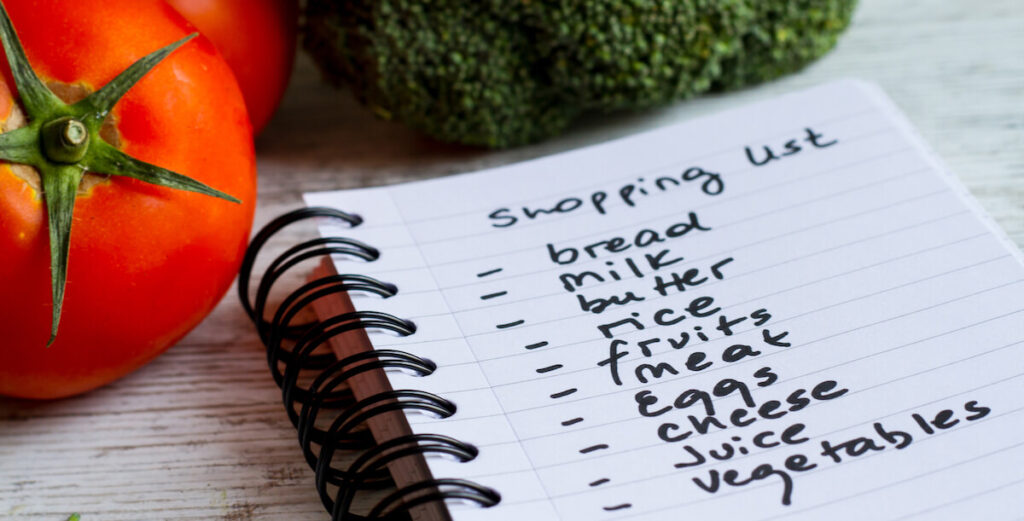
For many patients, concussion symptoms make daily tasks and activities more difficult. For example, patients may struggle to drive if they feel dizzy or find it hard to concentrate at work due to brain fog. For these situations, seeing an occupational therapist may help.
Occupational therapists can help with concussion treatment in several ways:
- Education: Occupational therapists help patients understand their symptoms and discuss treatment options that are suitable for them.
- Gradual return to daily activities: Occupational therapists work with patients to identify what activities are safe and develop ways for the patient to re-engage in those tasks.
- Cognitive, visual, or vestibular rehabilitation: Occupational therapists can assess cognitive, visual and vestibular function and develop a rehabilitation training plan to address these issues. For patients with severe symptoms, therapists may refer to other treatment providers who can further assist with recovery.
- Energy conservation and relaxation strategies: Occupational therapists help patients develop energy conservation plans to follow during the day, allowing for a gradual return to daily activities. Therapists can also work with patients to incorporate mindfulness strategies, coping plans, and other relaxation techniques to manage stress and anxiety caused by the concussion.
- Return to work planning: Occupational therapists can assess the patient’s readiness to return to work (or school) and collaborate with their employer (or teachers) on a gradual return to work (or schoolwork). Therapists advocate for any accommodations that patients may need, including using assistive technology, reduced hours, or a lighter workload. If patients cannot return to their old job, therapists can conduct vocational assessments to identify alternative opportunities that meet their functional abilities.
- Return to driving: Driving is a necessity for many people, but this can be dangerous for concussion patients experiencing headaches, dizziness, depth perception issues, and a slower reaction time. Occupational therapists can identify the issues that the patient is facing and develop a treatment plan to address these symptoms.
Find a Specialist
The American Occupational Therapy Association is the best place to find a local occupational therapist. The AOTA website lists accredited programs and provides links to state associations. You can also find occupational therapists (and many other healthcare providers) using the STAR Institute online directory.
9. Cognitive Behavioral Therapy
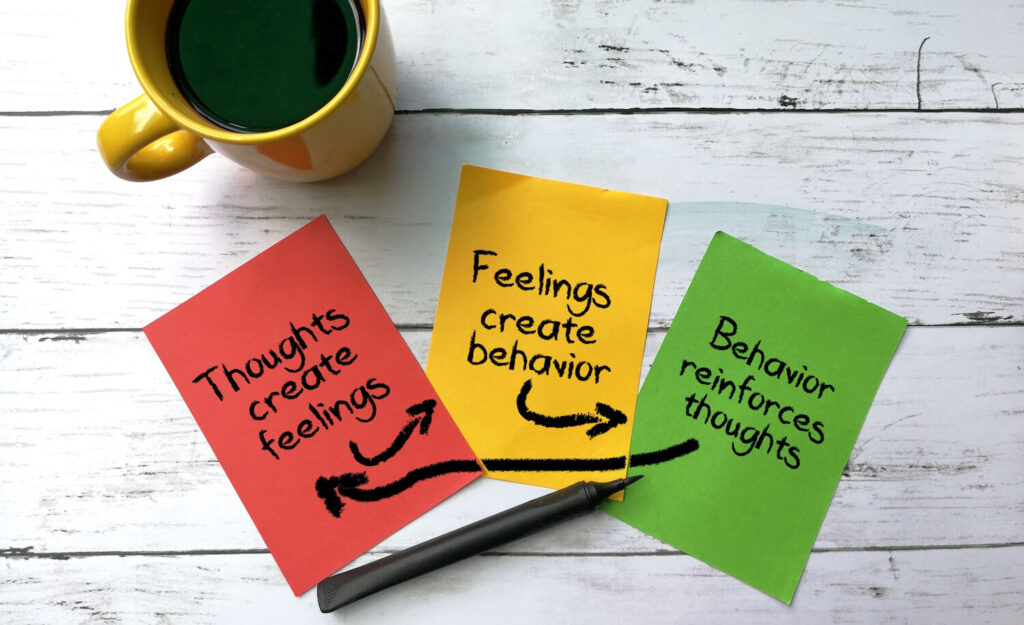
Cognitive behavioral therapy (CBT) is a type of neuropsychological talk therapy that helps patients manage problems by changing the way they think and behave. In concussed patients, it’s most commonly used to treat mood changes, anxiety, and depression, but it can be useful for other mental and physical health problems, including insomnia, headaches, and PTSD.
A cognitive behavioral therapist can help concussion patients by:
- Retraining negative thought patterns: CBT helps patients identify and redirect dysfunctional or unrealistic thoughts that affect their emotional well-being and decision-making. CBT’s greatest value is in this rehabilitative process; it’s why CBT is the most effective and appropriate talk therapy for post-concussion patients.
- Sorting through their feelings: A counselor can work with patients to examine different feelings—including anger, shame, or guilt—triggered by the concussion. As patients recognize these feelings, they can begin to understand how the concussion has affected their life.
- Helping the patient with their grief: Concussions can change patients’ lives in ways that they didn’t want or expect. Patients feel they lost something and need to grieve. A counselor can guide these patients through the grieving process to achieve emotional healing.
- Learning how to ask for support: Family and friends most likely want to help the patient during their recovery, but the patient may not know how to ask for help. A therapist can advise patients how to articulate their needs in a friendly and respectful manner.
- Balancing hope and realism: Having a clear picture of what recovery looks like can help patients enormously. Counselors can guide patients towards hopeful yet realistic expectations. For example, patients with post-traumatic headaches need to accept that they will be present for a while but, with the right treatment, there’s a good chance that they will eventually fade away.
- Adjusting back to life: Mental health counselors can support patients as they integrate back into their daily routines. Therapists can advise patients to move gradually and accept that they can’t just jump back to the way they were before the concussion.
Find a Specialist
To find someone who is truly trained in CBT, look through the databases from the Association for Behavioral and Cognitive Therapies and the Academy of Cognitive and Behavioral Therapies.
If you are unable to see a CBT therapist in person, or you would prefer to do it online, here are some options:
- CBT-i Coach: a free CBT-I app developed by the U.S. Department of Veterans affairs.
- Woebot and Wysa: CBT through AI chatbots. A study looking at Woebot found this method to be effective and engaging.
- Talkspace: A platform that allows patients to message and video call therapists.
- BetterHelp: The largest online counseling platform worldwide. It provides convenient and affordable access to therapists using messaging and video conferencing.
When deciding which therapist to choose, it’s important to find a provider with experience in dealing with concussions, but don’t just look at their credentials. Studies have shown that it’s more important to see somebody you trust and with whom you can build a good working relationship. If you feel understood, there’s a better chance that the therapy will help with your symptoms.
If you live in Provo, Salt Lake City, or anywhere else in the Utah County area, we can help you actively recover from your concussion. We are in network for most types of medical insurance. Schedule your evaluation today.
Treating a Concussion at Home
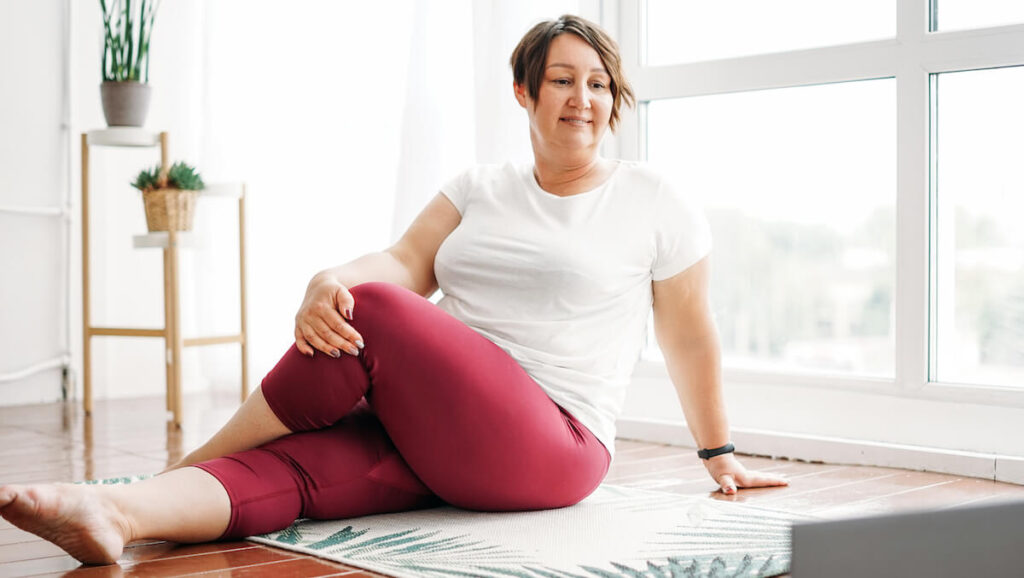
In addition to the treatments described above, you can also make smart decisions at home to help with your recovery:
1. Engage in Regular Exercise
Light aerobic activity that increases your heart rate without triggering severe symptoms — such as using a stationary bike or elliptical machine — is ideal for increasing blood flow to the brain and promoting healing. Ideally, engage in at least 30 minutes of exercise every day. Physical exercise will help a variety of post-concussive symptoms, including headaches and sleep problems.
2. Challenge Your Brain
As mentioned earlier, cognitive issues are common after a concussion. Especially during the early stages of your recovery, try not to do too many things at the same time. You may find it easier to concentrate on one single task at a time. Play cognitive games such as puzzles, word games, or logic activities. Here’s a list of 17 cognitive exercises you can try at home.
3. Rest More
It takes time for your brain to heal after a concussion, and you may feel tired even if you feel that you’re not doing much. Take frequent breaks during the day. This doesn’t mean staying in a dark room doing nothing. It can be as simple as stepping away from the computer and going for a walk on your lunch time or alternating between cognitive and physical tasks.
4. Follow a Healthy Sleep Pattern
Many concussion patients experience sleep disturbances. To improve your chances of a good night’s sleep, keep the same routine every day, even weekends and holidays. Avoid alcohol and caffeinated drinks in the evening and limit screen time before going to bed. If needed, take melatonin 30 minutes before you turn off the lights. Consider starting with a 0.5 mg dose and working up to an amount that gets results for you (up to 5 mg of melatonin is safe for adults).
5. Stay Socially Active
Symptoms like dizziness and sensitivity to light and noise can make social interactions challenging, but it’s important that you keep in touch with your loved ones. It may be easier to have a friend come over for a quiet face-to-face visit or, if that’s too much, stay in touch with friends and family through messages and phone calls.
6. Eat a Balanced Diet
Consume a balanced and healthy diet rich in protein, omega-3 fatty acids, fruits, and vegetables, while avoiding processed fatty and sugary foods. During the first two weeks after a concussion, our advice is to avoid alcohol completely. Concussions affect your metabolism, and your brain may not react to alcohol the way it normally does. You can read more here about the effect of alcohol and caffeine on an injured brain.
7. Be Patient
Recovering from a concussion is not a linear process. You will have some good days where you feel that your symptoms are getting better and some bad days where everything feels like it’s crumbling down. Be patient. Most people recover fully from a concussion, and getting appropriate treatment increases the chance that you will, too.
What to Do if Concussion Symptoms Persist
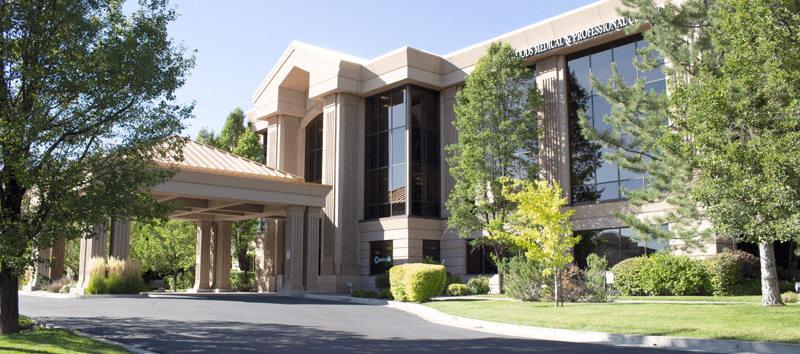
Taking an active approach to concussion recovery reduces the chances that you’ll have long-lasting symptoms. But if you do notice that, despite treatment, your concussion symptoms persist (or are worsening) beyond three months, you might have post-concussion syndrome (PCS).
Treatment for PCS is similar to treatment for a concussion, but it needs to be more intense and more targeted. You can learn more about the best treatment for post-concussion syndrome from our sister clinic, Cognitive FX, which specializes in PCS treatment.
If you live in Provo, Salt Lake City, or anywhere else in the Utah County area, we can help you actively recover from your concussion. We are in network for most types of medical insurance. Schedule your evaluation today.
